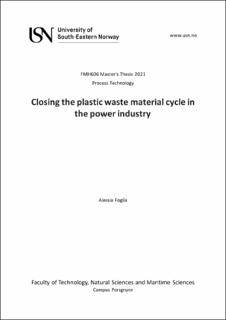| dc.description.abstract | Cables and wires are widely used in electronic equipment and power industry for transmission of both data and electricity, where the rapid development of power lines and constant update of electronic devices have resulted in an increase of waste cables. However, recycling of cables and wires is mainly focused on the recovery of metallic fraction due to their higher market value, rather than other plastics used in insulation. Polymeric materials from the scrap cables are often disposed in landfills or incinerated, which results significant risks to health and the environment due to the release of hazardous substances. Among different recycling techniques, the pyrolysis process is a promising alternative for waste recycling, where plastics are trasformed into light gases and oils which can be useful raw materials for fuels and/or chemical/polymer production.
This study aimed to analyze the problems related to cable waste recycling in detail, especially to the chemical recycling of the main polymers, which is an alternative route to incineration and landfill. An extensive literature search has therefore been carried out on the pyrolysis of the main polymeric materials used in cables, such as polyethylene, cross-linked polyethylene, and polyvinyl chloride. Finally, a method was proposed to analyse different polymers from cables in a pyrolysis reactor on a laboratory scale. | |
